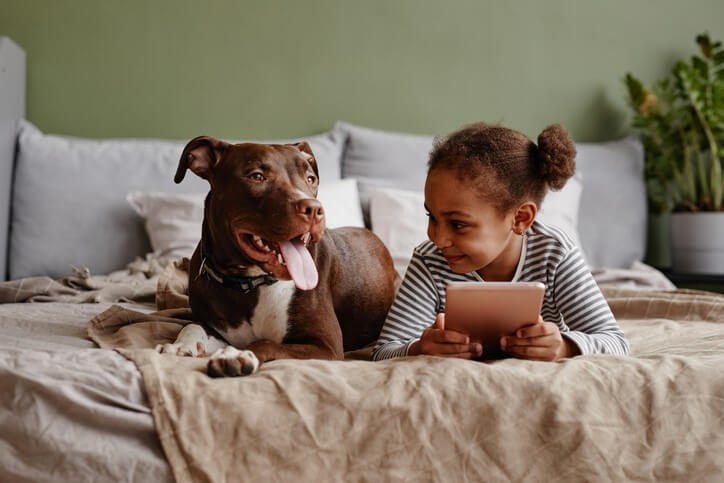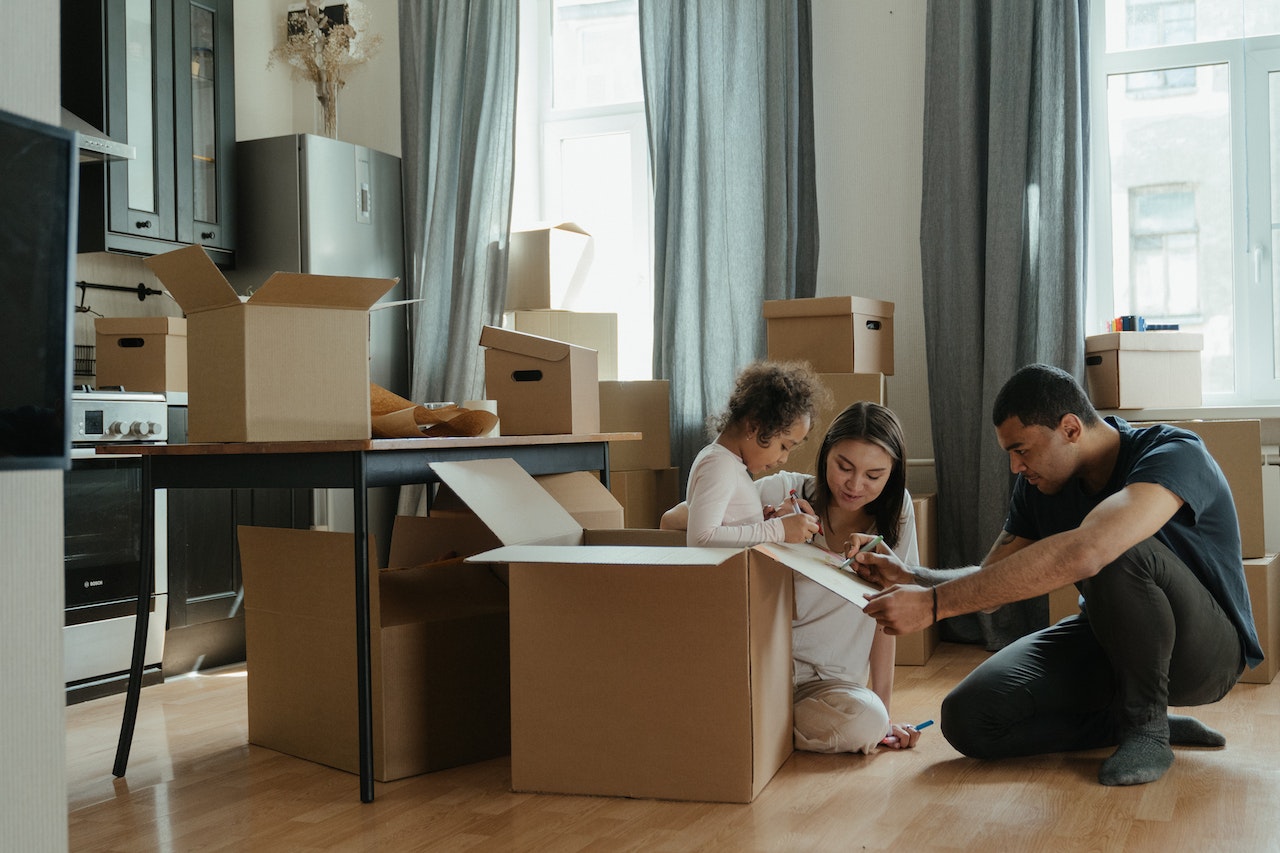For many people, pets are important members of the family. As of 2024, approximately 66% of American households (86.9 million homes) own at least one pet. If you’re a pet owner looking for a new home or apartment, some helpful home modifications for your pets can give them the best life possible. Whether you’re looking for specific features in a new home or need to make changes, this guide provides plenty of insight to make the process easier. It also includes pet care tips for your beloved furry family member to ensure they’re happy and safe in their new space.
How pets influence the home-buying decision
If you’re in the market for a new home, you’re probably interested in how many bedrooms and bathrooms it has, the location, and the key features you need. However, a few factors could influence your home-buying decision if you have pets. Get a home inspection before making an offer on a home to ensure it’s safe for you and your pets. If you are considering listing your property for extra cash, you should consider having a Pet-Friendly Airbnb.
Play space or playroom
If your new home doesn’t have a backyard or you’re moving with pets into a new place, providing them with their play area is crucial to their happiness and well-being. Some pet owners prefer to keep their animals inside so they can monitor them. Look for a home that has a separate area where your pets can play and interact with you and each other. This option is also suitable for those who can’t be home all day. Providing your pet with a separate space will keep them active, safe, and entertained whenever you’re not around.
If you have an outdoor living space, you can create a safe and fun outdoor environment for your pet. This dedicated area can offer your pets the freedom to explore, play, and enjoy fresh air. Dog-friendly decks can be a fantastic addition to your outdoor space. These decks provide a comfortable area for your pets to lounge, equipped with non-slip surfaces and shaded areas to protect them from the sun. You can also incorporate pet-friendly plants and materials or pet-friendly furniture, to keep your furry friends safe. When setting up the outdoor space, secure fencing to ensure they remain safe while enjoying the outdoors.
Washing station and/or mudroom
Dog owners know just how easy it is for Fido to get dirty. A home with a separate washing station and a mudroom is a great way to clean off your dog before letting them back inside. If you don’t find a home with a washing station, a first-level bathroom is ideal for preventing your pet from tracking dirt and mud into the rest of the house. Look for a bathroom with a walk-in shower or a laundry room with a deep sink. This option is the best way to clean off your pup so you can practice pet care and keep your new home clean.
Storage solutions
Look for a home with extra storage for things like leashes, toys, and litter boxes. Built-in cabinets and shelving are great for storing your pet’s important items. Homes with storage under a staircase offer a great way to keep pet essentials neatly hidden from view. A shed or other outbuilding can also be a great place to store your pets’ necessary stuff.
Pet nook
Choose a home where you can create a comfortable, separate “pet nook.” This area can provide a place for your pet’s crate or bed, so they have a quiet and safe space to sleep. A little cutout in a room or even a section of your laundry room can become a fantastic place to give your pets a comfortable area they can call their own.
Garden or backyard
While many cat owners prefer to keep their felines inside, dog owners know how important it is to have a place to run and release all that pent-up energy. Ideally, a home with a lovely garden or a large backyard will give your pet enough room to run and roam. Ensure the garden (or yard) is filled with pet-safe plants so your furry friend doesn’t accidentally eat something they shouldn’t. A covered porch will also provide your pet with a shaded area to rest in between playtimes.
Consideration for older pets
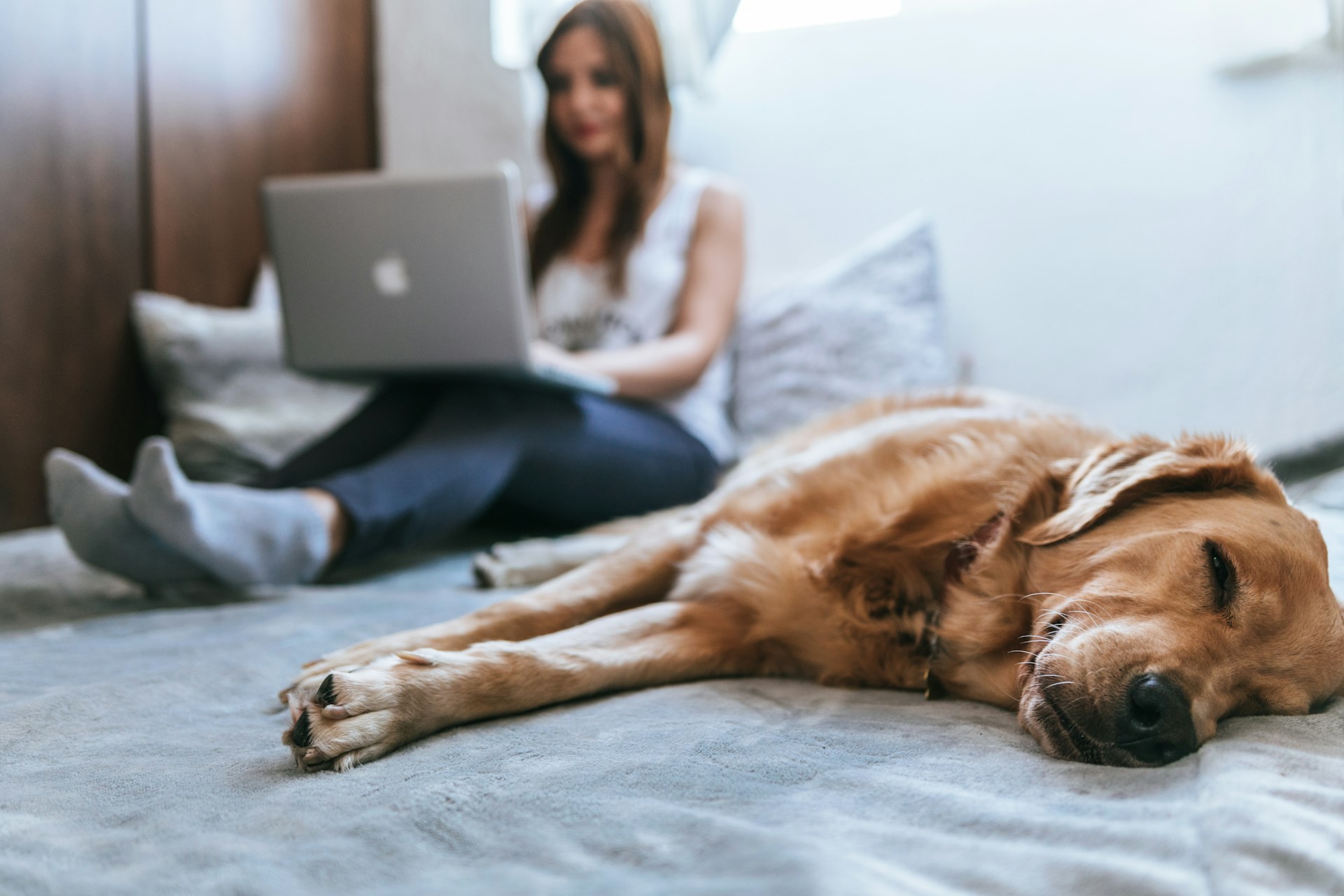
People with old dogs or older cats should consider a few ways to ensure that their home is safe and comfortable for their elderly pet. Here are some things to remember if you’re moving into a new home with a senior cat or dog.
Stairs
Climbing the stairs can be challenging for older pets. If possible, choose a one-story ranch-style home to avoid the issue of stairs. If you move into a home with stairs, ensure you keep your pet care essentials on the first floor. For older pets that want to climb stairs, add tread or some carpet pieces to provide more grip and traction, which may help to prevent accidents. Even old dogs like to play, and they certainly need to get adequate exercise. Consider creating a separate play area for your senior pet to move around without hurting themselves.
Temperature
Try to keep your home at a comfortable temperature as much as possible, which applies to pets of all ages, including puppies and kittens. Install a programmable thermostat to monitor and change the indoor temperature at any time from your smartphone. Provide your pets with easy access to cool, clean water at all times. Some pets (particularly cats) prefer drinking from moving water, so adding a fountain or two is always welcomed. The key is to keep your home’s indoor temperature not too hot nor too cold so that your older pet is comfortable and won’t overheat or get too chilly.
Pet ramps
Much like you’d install a wheelchair ramp for a family member in need of one, pet ramps are great home modifications for your pets of an older age. These ramps eliminate the need to climb stairs and will give your furry friend easier access to the front door or the bed. You can also add pet stairs next to your bed, so it’s easier for your dog or cat to climb onto the bed if they sleep with you. Inspect all areas of your home and determine which ones will benefit from adding a pet ramp. You can find pre-made pet ramps or build one at home with just a few simple materials.
Before you move
Moving with cats and dogs can be stressful, so it’s important to do a few things before the big day to help your pet adjust. Here are some tips to ensure your pets have a smooth, stress-free experience as you move into your new space.
Let your pet get familiar with moving supplies
It’s easy to get caught up in the hustle and bustle of planning a move, but your pet may be confused by all the new activity around them. Buy all your moving materials (like cardboard boxes, tape, and packing material) at least two weeks or more before you plan to start packing. Leave the supplies in a room of your home, like a spare bedroom or corner of the living room, so your pets can “inspect” and sniff them. The longer the supplies sit there, the more your pet will become familiar with them and less intimidated or confused. Don’t cram items into an area of the home where your pet sleeps or rests. You should also ensure that you don’t store the moving supplies in an area where your pet plays, uses the bathroom, eats, or drinks.
Create a positive association
Creating a positive association with the moving process will make the entire experience easier for everyone. When your pet sniffs or checks out moving materials, reward them with verbal praise and yummy treats. You can also play with your pets while they’re near the items or add them to your play sessions so that they become a positive part of daily life. Throw a few treats into a moving box, then let your dog or cat sniff them and find them. Whenever your dog is near moving supplies, train them to associate them with something good and pleasant.
Transporting your pet
Transporting your pet requires careful consideration and making sure your pet is comfortable. Well before the move, get your pet a carrier and crate and train them to be comfortable in it. Introduce it gradually, associating it with positive experiences like treats or play. Prior to departure, schedule a visit to the veterinarian to ensure your pet is up-to-date on vaccinations and to obtain any necessary paperwork for travel. During transit, keep your pet’s essentials handy, such as food, water, medications, and familiar toys or blankets to provide comfort. If traveling by car, plan regular breaks for your pet to stretch their legs, relieve themselves, and stay hydrated. For longer journeys or air travel, research pet-friendly accommodations and airlines with pet-friendly policies. If you rather have a professional handle the transportation, you can search for companies that specialize in transporting pets. The most important part is to be patient and have your pet’s best interest in mind.
Make a pet travel checklist
While you should certainly make a few key home modifications for your pets before you move, it’s also vital to draft a thorough checklist to ensure that your pet has everything it needs for the big event. Here are some key items to include on your pet care travel checklist, whether moving down the street or across the country.
- Recent photos of your pet and all of their most recent veterinary health records, including vaccination certificates
- Plenty of food and treats, along with some portable food and water bowls
- A few of your pet’s favorite toys and treats
- Leashes and harnesses
- Blankets, pet beds, crates, and crate liners
- Dog “poop bags” and scoops
- A clean litterbox for your cats and extra, fresh litter
- If you’re bringing small pets like birds or rodents, include a cage cover to keep them calm
- Paper towels, wet wipes, and other cleaning supplies
- Basic must-haves for your first day in the new home
- If your pet gets motion sickness, ask your vet about anti-nausea medication
- Make sure your pets’ tags are current and up to date
- Keep your pet safely secured in the vehicle at all times and never leave them unattended
- Give your pets regular food, water, and toilet breaks if you’re traveling a long distance
Settling into your new home
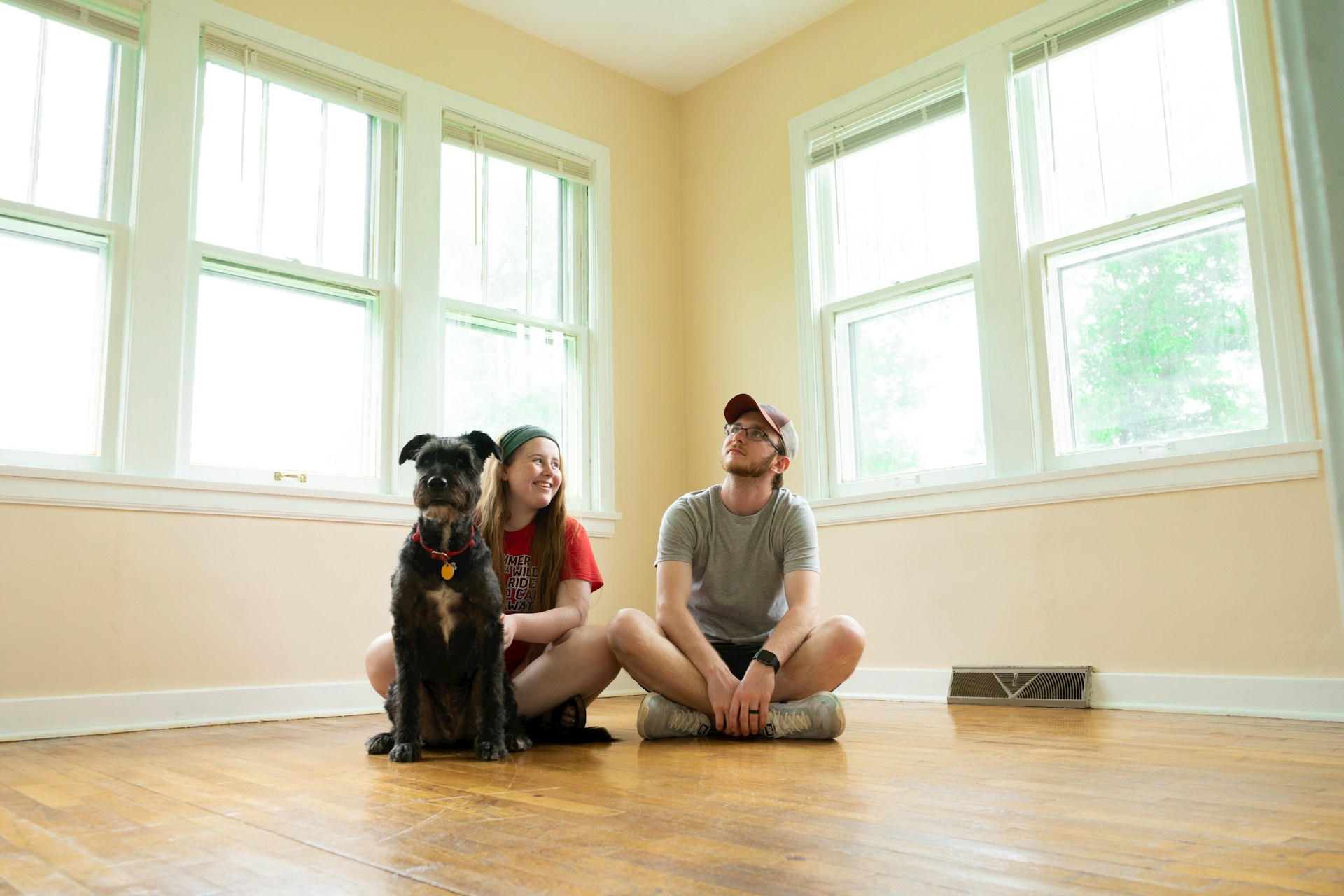
Once you reach your new home, there are some important pet care tips to remember so that it’s easier for your furry family member to adapt to their new surroundings. Moving with cats and dogs is stressful, but these simple tips make the transition easier.
Unpack your pet’s belongings first
Before you unpack your favorite wall art or furniture, unpack your pet’s belongings and place them throughout the home. When your pet sees and smells their belongings, they will instantly feel calmer. Having something familiar in the home can significantly soothe your pet’s nerves. For cats (and dogs), consider wiping a sock or a soft blanket on their face and then rubbing it onto corners and door frames. Cats release pheromones through glands on their face, so rubbing them onto the surfaces of your new home will instantly make them feel more comfortable. Set up your pet’s bed in a designated area and add a crate so they have a safe place to “hide” and rest until they are ready to start exploring their new home.
Pet proofing
Bringing a puppy or dog to a new home means you’ll need to take a few steps to make it safe. You can find many puppy-proofing tips on the internet or from your local vet to help your dog or puppy safely explore its new territory.
To make your home safe start by:
- Keeping household chemicals, medications, small objects, and sharp items out of reach.
- Covering electrical outlets and cords to prevent pets from chewing on electrical cords.
- Buying pet-friendly plants in case your pet (accidentally) chews on one.
- Inspecting fences and gates so they’re secure and there are no gaps or holes where pets could escape or get stuck.
- Making sure windows are securely closed or screened to prevent pets from falling or escaping.
- Using pet-proofing products such as door stoppers, furniture covers, and cabinet locks to minimize potential hazards.
Consider their daily routine
When you move into a new home, it’s important to keep your pet’s daily routine similar to the routine they had in your old home. Try your best to feed, walk, and play with your pet at the same time every day. Routine is crucial for pets and gives them a sense of safety. Professional dog training can go a long way if you’re worried your dog is not ready for a move.
- Make sure that mealtime is the same in the morning, afternoon, and evening. It doesn’t have to be the same time as in your old home, but the closer you get to their regular feeding schedule, the better.
- Try to stick to a bedtime schedule every night if possible. Maintaining this routine, especially for dogs, is vital to their well-being.
- Take your dog for walks at the same time you used to, or start a new routine immediately and stick to it.
Establishing a consistent routine for your pet is crucial for their well-being. With smart home technology tailored for pets, you can automate feeding times, adjust environmental conditions like temperature and lighting, and even remotely interact with your furry friend through cameras or interactive toys, ensuring they stay happy and healthy even when you’re away.
Remember, there will be some anxiety.
As pet owners, it’s important to understand that anxiety is entirely normal whenever your pet moves into a new home. Remember, they’re used to a particular place and smells, so a sudden change like this can be overwhelming. Be calm and reassuring to your pet, and don’t get angry if they have a few accidents for the first week or two. Do your best to spend as much time with your pet as possible so they can start to feel confident and comfortable in their new home. Using the same beds, toys, and blankets from your old home will give them comfort whenever you’re not home and at night when it’s time for bed.
Introducing your pet to others
One last thing: if you are introducing a new pet to a resident, there are also a couple of considerations you need to have in mind.
Here are steps for introducing a new kitten to a resident cat:
- Gradual introduction: Keep the new kitten in a separate room for a few days to allow both cats to get used to each other’s scent.
- Controlled interaction: Have supervised visits between the two cats while they are separated by a barrier, such as a baby gate. This will allow them to see, smell, and get used to each other.
- Neutral territory: Consider having the first interactions in a neutral area, like a bathroom or a new room, so neither cat feels territorial.
- Positive reinforcement: Reward both cats with treats and positive attention when they show calm behavior around each other.
- Be patient: The introduction process can take several weeks, so be patient and don’t force the cats to interact before they are ready.
It’s important to watch for signs of aggression and to intervene if necessary. If either cat shows signs of fear, stress, or aggression, it’s best to separate them and try again later.
How to deal with guests
Living with pets can bring immense joy, but hosting guests can present some challenges. Here’s a guide on how homeowners with pets can handle situations with their furry friends and guests or their property:
- Basic training will not only help you and your home, but it also ensures pets are well-behaved around guests.
- Ensure you can separate your pets’ designated space from guests if needed.
- Be proactive by informing guests about your pets and setting expectations for interactions.
- Have a plan for handling unexpected situations, such as a pet becoming agitated or guests feeling uncomfortable.
- Provide information on local emergency veterinary services in case of pet-related incidents.
Is best to take proactive measures as you can be liable for damages or biting incidents. If a pet bites someone on your property, the responsibility typically falls on the pet owner. In the same way, if your pets damage any property belonging to your guests, the cost of repair or replacement is the pet owner’s responsibility. Encourage guests to keep personal items out of reach of pets and provide safe spaces to store belongings. Consider obtaining home insurance that includes coverage for pet-related incidents that include your guests. Discuss this coverage with your insurance provider to understand the extent of protection. Communicate openly about your pet’s breed and training, as these factors can influence your insurance.
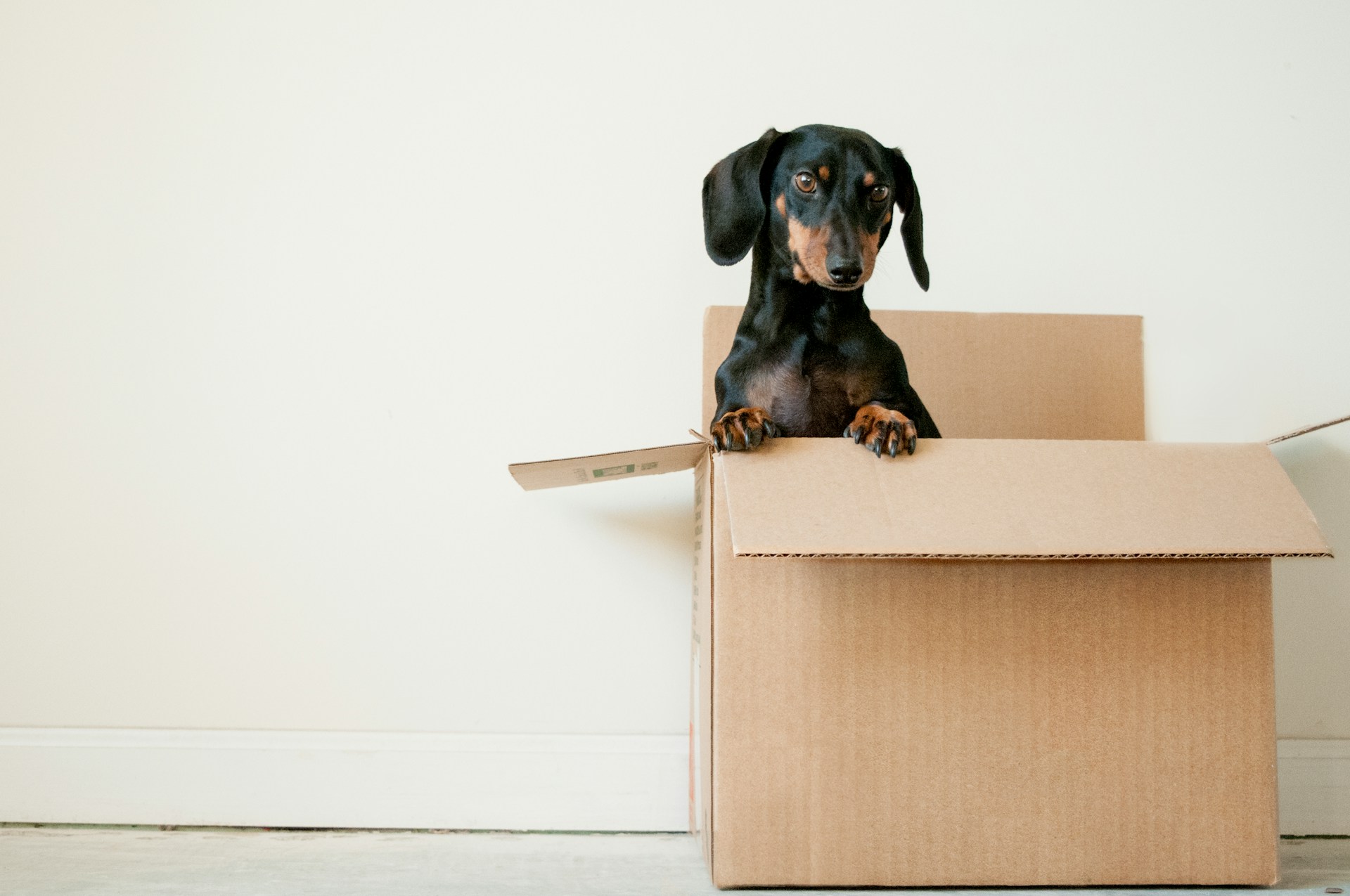
The role of home insurance in protecting your pets
Home insurance is an essential investment for homeowners looking to protect their property and finances from unexpected incidents. However, many homeowners may wonder if their home insurance policy covers their pets in the event of an accident or injury.
The short answer is that while home insurance policies typically do not provide coverage for your pets themselves, they may offer liability coverage in the event that your pet causes damage to someone else’s property or injures someone.
Liability coverage is a standard component of most home insurance policies and is designed to protect you financially in the event that you are found liable for causing harm to someone else or their property. If your pet causes damage to someone else’s property or injures someone, your home insurance policy may provide coverage for any resulting damages up to the limits of your policy.
However, it’s important to note that not all home insurance policies offer the same level of liability coverage, and coverage and exclusions can vary widely among providers. Some policies may exclude coverage for certain types of pets or certain types of incidents, so it’s important to carefully review your policy to understand what is covered and what is excluded.
In addition to liability coverage, some home insurance policies may offer additional coverage options for pet-related incidents, such as damage to your property caused by your pets. Again, it’s important to review your policy to understand what coverage is available and to work with your insurance provider to ensure that your coverage meets your specific needs.
While home insurance policies do not typically cover your pets themselves, they may provide liability coverage in the event that your pet causes damage to someone else’s property or injures someone. If you have a pet, it’s important to review your home insurance policy to understand what coverage is available to you and to ensure that you have adequate protection in place to protect both your home and your furry friend.
Whether you’re moving with puppies and kittens or old dogs and cats, making a few home modifications for your pets will make the process easier. Consider hiring a handyman to help out with some renovations. Keep these tips in mind to ensure your furry family member is part of the transition and they have a stress-free experience. Proper planning ensures your pet will love living in their new home as much as you do.
